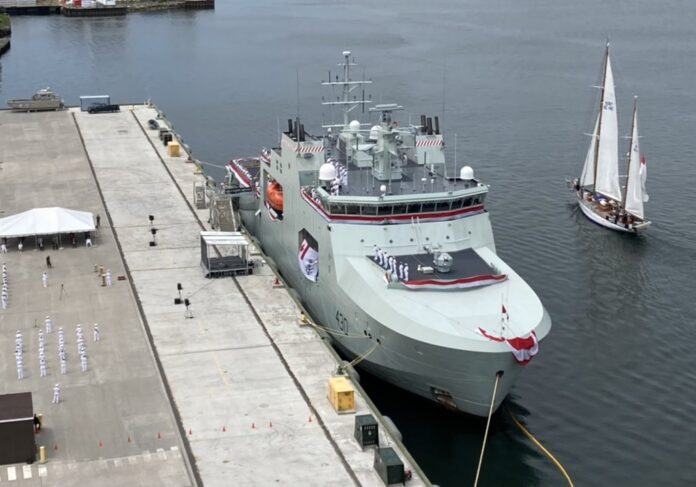The Royal Canadian Navy (RCN) has officially commissioned the first Arctic and Offshore Patrol Ship, HMCS Harry DeWolf, with a ceremony held in NJ Jetty at CFB Halifax on 27 June.
According to a press release issued by the Canadian Ministry of Defence, this significant occasion represents a great achievement for the Canadian shipbuilding industry and for the RCN, with the first ship of the RCN’s future fleet delivered under the National Shipbuilding Strategy, officially entering service.
“Today’s ceremony marks a historic day for the Canadian Armed Forces as we welcome the first ship of the Royal Canadian Navy’s future fleet into service. HMCS Harry DeWolf and the Arctic and Offshore Patrol ships that will follow it into service will enable the Royal Canadian Navy to maintain an enhanced presence in Canada’s North, to patrol and protect our Arctic sovereignty, and to keep Canada safe and strong at home. This enhanced presence is significant, as it also enables the RCN to continue to foster its affiliation with the communities of the North and to engage and learn from the people of this important region. Today, with the commissioning of our first Arctic and Offshore Patrol Ship, we are witnessing a moment in history, and I wish HMCS Harry DeWolf and its crew the very best as they prepare to embark on their first operational deployment.” said Harjit S. Sajjan, Minister of Defence during the ceremony.
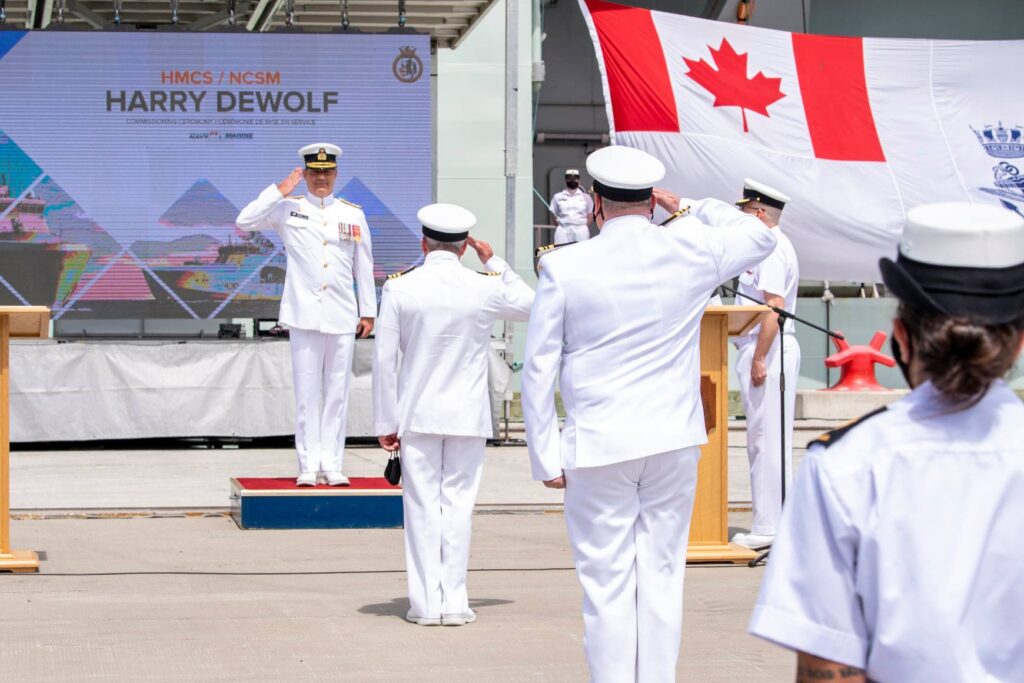
The Harry DeWolf-class Arctic and Offshore Patrol Ships (AOPS) will bolster the RCN’s presence in the Arctic and its ability to operate globally. Specifically designed to patrol Canada’s northernmost regions and offshore waters, this new class of ship will be at the core of an enhanced Canadian Armed Forces (CAF) Arctic presence, effectively complementing the capabilities of our other current and future warships through critical reconnaissance and surveillance activities.
Under Canada’s defence policy, Strong, Secure, Engaged, the Government of Canada is investing in the Royal Canadian Navy (RCN) to ensure it can respond to current and future defence challenges.
The Arctic and Offshore Patrol Ships (AOPS) will significantly enhance the CAF’s capabilities and presence in the Arctic, better enabling the RCN to assert and uphold Arctic sovereignty. The AOPS will also augment Canada’s presence offshore, and will be capable of conducting a wide variety of operations abroad. The first AOPS, HMCS Harry DeWolf, was launched in fall 2018, and was delivered to the RCN on July 31, 2020. It was commissioned on June 26, 2021. Construction of AOPS three, four and five is ongoing, and construction of the sixth ship is expected to begin in 2022.
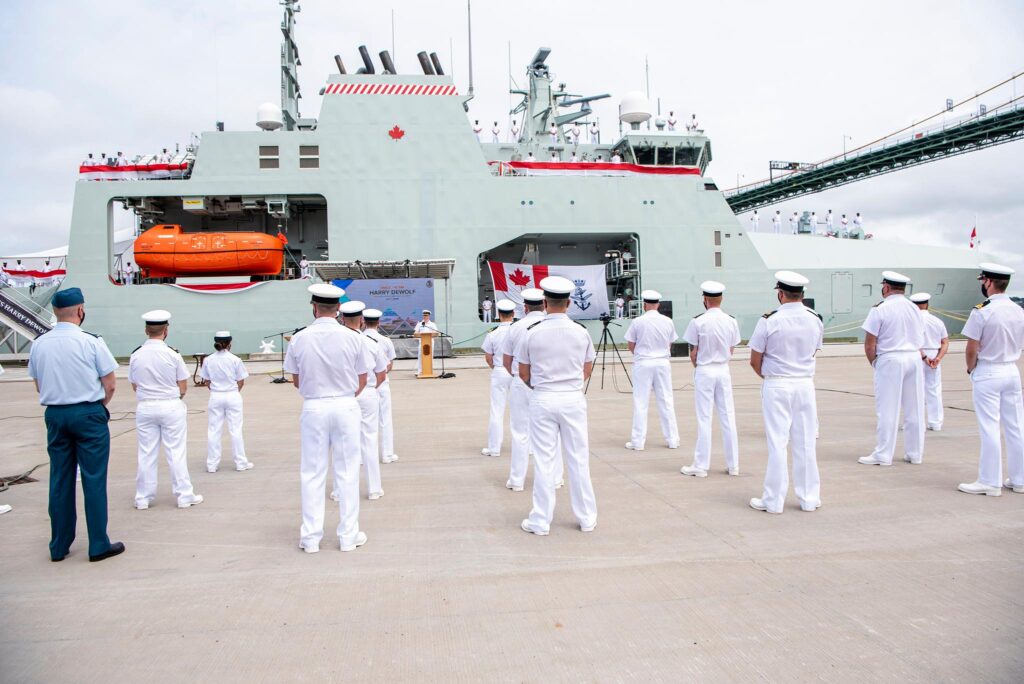
The ships of the Harry DeWolf class will be affiliated with regions of the Inuit Nunangat. The first affiliation between HMCS Harry DeWolf and the Qikiqtani region of Nunavut was formalized in May 2019. Affiliation between an HMC Ship, its sailors and civilian communities is a long-standing and honoured naval tradition, with relationships lasting throughout the service-life of the ship.
HMCS Harry DeWolf is scheduled to participate in the maritime portion of Operation NANOOK in August 2021, following which it will transit through the Northwest Passage, and carry on to circumnavigate North America.
The launch of the second of six AOPS, the future HMCS Margaret Brooke, was launched 10th November 2019 at Halifax Shipyard.
About HMCS Harry DeWolf:
The Harry DeWolf-class offshore patrol vessels are warships of the Royal Canadian Navy (RCN) built by the Government of Canada Arctic and Offshore Patrol Ship (AOPS) procurement project, part of the National Shipbuilding Procurement Strategy (now called National Shipbuilding Strategy). In July 2007 the federal government announced plans for acquiring six to eight icebreaking warships for the RCN.
The vessels are modelled on the Norwegian NoCGV Svalbard and as of 2007 were projected to cost CA$3.5 billion to construct with a total project procurement budgeted to cost $4.3 billion in order to cover maintenance over the 25-year lifespan of the vessels.
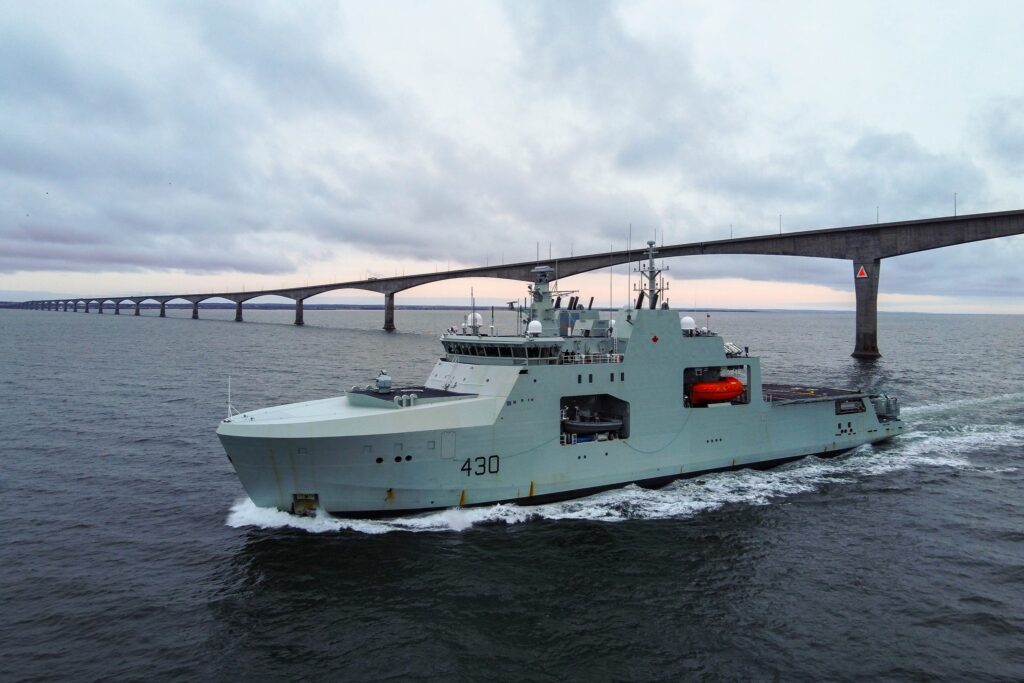
The hull of the Harry DeWolf-Class vessels is designed to meet the International Association of Classification Societies (IACS) Polar Class (PC) 5+ requirements. Each vessel will have a length of 97m, a beam of 19m, a draught of 5.7m and a displacement of 5,800t. It will accommodate a crew of 45 members and carry up to 40 people additionally.
The vessels can carry 8.5m-long multi-purpose rescue boats with a maximum speed of more than 35k for rescue, personnel transfer and boarding missions. They can also deploy a 12m RCMP/JTF2/Navy mission-fit boarding/assault boat. The vehicle bay houses pick-up trucks, all-terrain vehicles (ATVs) and snowmobiles.
The flight deck, located on the stern, supports the operation of a variety of helicopters, ranging from a small utility aircraft to the Royal Canadian Air Force’s CH-148 Cyclone maritime helicopter. The enclosed forecastle at the forward part of the ship is meant for protecting the foredeck machinery and workspace in challenging Arctic conditions.
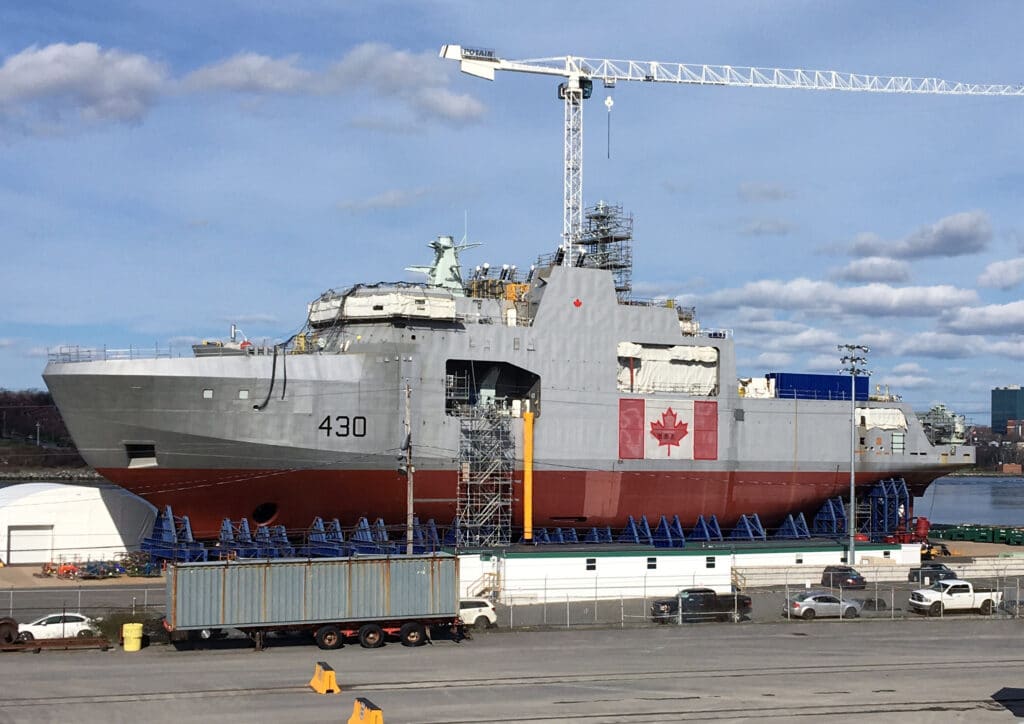
The AOPS will be armed with BAE Systems’ remote-controlled 25mm MK38 machine gun, which features an M242 cannon and a highly accurate gun targeting and surveillance system.
The power plant of the Harry DeWolf-Class patrol vessels will consist of two 4,500kW main propulsion motors and four 3,600kW generators. A bow thruster will be installed in the bottom of the vessel to enable berthing or manoeuvring without using tugs. The retractable active fin stabilisers will reduce the roll motion of the ship.
Check out Naval Library App to find out the specifications of Harry DeWolf-Class offshore patrol vessels.




